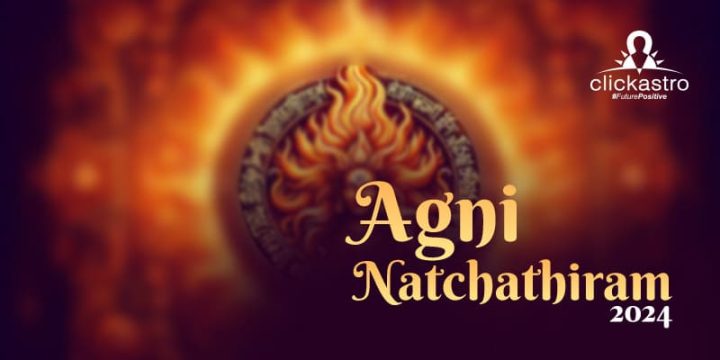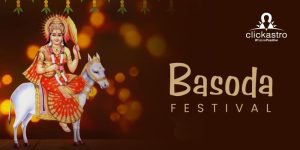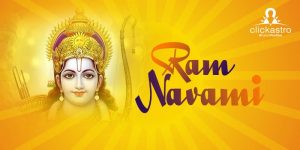Contents[hide]
Introduction
In the southern state of Tamil Nadu, amidst the scorching heat of May, arrives the divine festival of Agni Natchathiram. Dedicated to Lord Murugan, arguably the greatest spiritual icon of the Tamil culture, Agni Natchathiram illuminates the hearts of millions with fervor and devotion. The festival epitomizes the essence of faith and tradition that is deeply rooted in Tamil culture. Agni Natchathiram comprises a 14-day period during which the Sun traverses the star Krittika. In 2024, this period is from May 4th to May 29th. During this time, devotees embark on a spiritual journey filled with rituals and prayers, seeking the divine blessings of their beloved deity. This sacred festival holds immense significance in the hearts of Tamil Nadu’s people as it symbolizes their unwavering devotion to Lord Muruga, the son of Goddess Parvati and Lord Shiva. Revered as the epitome of courage and valor, Lord Muruga, also known as Skanda, Kartikeya, or Subrahmaniam, embodies the virtues that devotees aspire to emulate. It is customary for devotees to throng temples dedicated to Lord Muruga, particularly revered sites like Palani, Tiruttani, Palamuthirsolai, Swamimalai, and Tiruchendur during Agni Natchathiram. Here, devotees partake in sacred rituals and ceremonies, and immerse themselves in the divine atmosphere, seeking solace and blessings for themselves and their loved ones. Through this, Agni Natchathiram becomes more than just a festival as it becomes a profound expression of faith, unity, and devotion, uniting millions in their shared reverence for Lord Muruga.Agni Natchathiram origins
The Tamil word Agni Natchathiram signifies the star Krittika, governed by Lord Agni, and embodies the different mythology and beliefs deeply ingrained in Tamil culture. According to Hindu mythology, Lord Murugan is the son of Goddess Parvati and Lord Shiva. As the divine warrior deity, Lord Murugan holds a special place in the hearts of devotees, serving as a source of inspiration and guidance.
The Pleiades or Krittika are a group of six stars located in the Taurus and Aries signs. They are regarded as extremely favorable for Lord Muruga’s worship. According to Skanda Purana Lord Muruga was created out of six flames from Lord Shiva’s third eye. To care for the infants, Agni and Vayu Devas carried the flames to the Krittika sisters. Goddess Parvati united them into a single boy with six faces. Lord Muruga was dubbed “Shanmuga” as a result.
Goddess Parvati then bestowed upon the Krittika sisters the blessing that Lord Muruga would benefit from special poojas or rituals performed on Krittika day. It is thus considered extremely beneficial to connect with Lord Muruga as the Sun passes through the Kritikka sisters which happens in the month of May.
Holy sites of Agni Natchathiram
At the heart of Agni Nakshatram lies the sanctity of the temples dedicated to Lord Muruga, serving as beacons of devotion and spirituality for countless devotees. Among these revered sites, Palani, Tiruttani, Palamuthirsolai, Swamimalai, and Tiruchendur stand as pillars of faith. Thousands of devotees arrive from far and wide to partake in the sacred rituals and bask in the divine aura of their beloved deity during this time. In the hallowed grounds of these temples, whose air is infused with the fragrance of incense and the melodious chants of hymns, the devotees in full reverence and devotion offer their prayers and seek the blessings of Lord Muruga. The temples serve as focal points for spiritual communion, where devotees find solace, guidance, and inner peace. Through rituals such as ‘Abhishekam’ and ‘Pradakshina,’ devotees forge a sacred bond with Lord Murugan that transcends the physical realm. For devotees, the pilgrimage to these revered temples during Agni Natchathiram is not merely a religious obligation but a profound spiritual journey, where they find sanctuary amidst life’s trials and tribulations. It is here, in the embrace of their beloved deity, that devotees experience a sense of belonging and purpose, reaffirming their faith and devotion to Lord Muruga.Pradakshina
At the heart of Agni Nakshatram festivities lies the sacred ritual of ‘Pradakshina’ also called Girivalam. This involves the circumambulation of the holy hill of Arunachala in south India. It occurs both in the morning and evening. As devotees embark on this 14-kilometer sacred path, soaking in the soothing aroma of medicinal herbs that adorn the hillsides, each step taken becomes a testament to their faith and devotion to Lord Murugan. Female devotees, in particular, adorn themselves with Kadamba flowers, known as Lord Murugan’s favorite. They are carefully woven into garlands and worn as adornments to express their love and devotion towards the deity. Through this act of Pradakshina, devotees engage in a sacred dialogue with the divine, renewing their commitment to the spiritual path, that binds them to their beloved Lord Murugan. More than just the physical act of walking, it becomes a transformative journey of the soul, where devotees find solace, healing, and divine grace amidst the serene beauty of the holy hills and the divine presence of Lord Murugan.Abhishekam
Abhishekam is performed at the Palani temple in honor of Lord Murugan during Agni Natchathiram. This ritual involves the pouring of water, known as ‘Theertha,’ over the deity’s idol, symbolizing the purification and sanctification of the divine presence. The water used in the Abhishekam is believed to be imbued with the divine blessings and grace of Lord Murugan and is distributed as sacred Theertha amongst the faithful, who receive it with reverence and gratitude.This ritualistic gesture embodies the spirit of generosity and compassion, as devotees share the blessings of Lord Murugan with the wider community, fostering a sense of unity and collective harmony. The sacred ritual of Abhishekam and the distribution of Theertha lifts Agni Natchathiram beyond the boundaries of time and space to become a timeless symbol of devotion enriching the lives of all who seek solace and refuge in the loving embrace of Lord Muruga.
The inauspicious nature of Agni Natchathiram
Amidst the festive nature of Agni Natchathiram, there exists a belief in its inauspicious nature, rooted in the scorching heat that characterizes this period. As temperatures soar, some adhere to ancient customs and traditions that caution against undertaking auspicious events, journeys, or financial transactions during Agni Natchathiram. The extreme heat that prevails during Agni Natchathiram is seen as a harbinger of potential discomfort and adversity. In response, devotees refrain from activities that may invite misfortune or disrupt the sanctity of the festival. This belief is deeply ingrained in the cultural fabric of Tamil Nadu and has been passed down through generations as a mark of respect for tradition and reverence for the divine. While the festivities of Agni Natchathiram continue unabated, this underlying belief serves as a reminder of the delicate balance between joyous celebration and mindful reverence. It underscores the importance of honoring ancient wisdom and observing time-honored rituals, even amidst the fervor of religious festivities.Ultimately, this belief reflects the enduring resilience and adaptability of Tamil culture, which seamlessly integrates tradition and modernity, spirituality and pragmatism. It reminds us that amidst the exuberance of celebration, it is essential to remain grounded in our cultural heritage and spiritual values, recognizing the interconnectedness of past, present, and future in shaping our collective consciousness.
Conclusion
In essence, Agni Natchathiram is more than just a festival as it celebrates the sacred communion between devotees and Lord Muruga. It serves as a poignant reminder of faith, resilience, and the eternal pursuit of divine blessings amidst life’s adversities. As devotees immerse themselves in the rituals and prayers of Agni Natchathiram, they forge a deep spiritual connection with Lord Murugan, seeking divine intervention in their lives. Through acts of devotion such as Pradakshina, Abhishekam, and the distribution of Theertha, they express their unwavering faith and reverence for the deity. Beyond the temporal celebrations, Agni Natchathiram symbolizes the enduring bond between humanity and the divine, reflecting the timeless values of love, compassion, and devotion. It serves as a beacon of hope and inspiration, illuminating the souls of millions with the promise of divine grace and blessings.As the Sun marks another period of Agni Natchathiram, its legacy continues to enrich Tamil culture and reaffirms the timeless bond between devotees and Lord Muruga. In this sacred journey of faith and devotion, devotees find strength, solace, and inner peace, transcending the challenges of life with unwavering trust in the divine presence that guides and sustains them.







